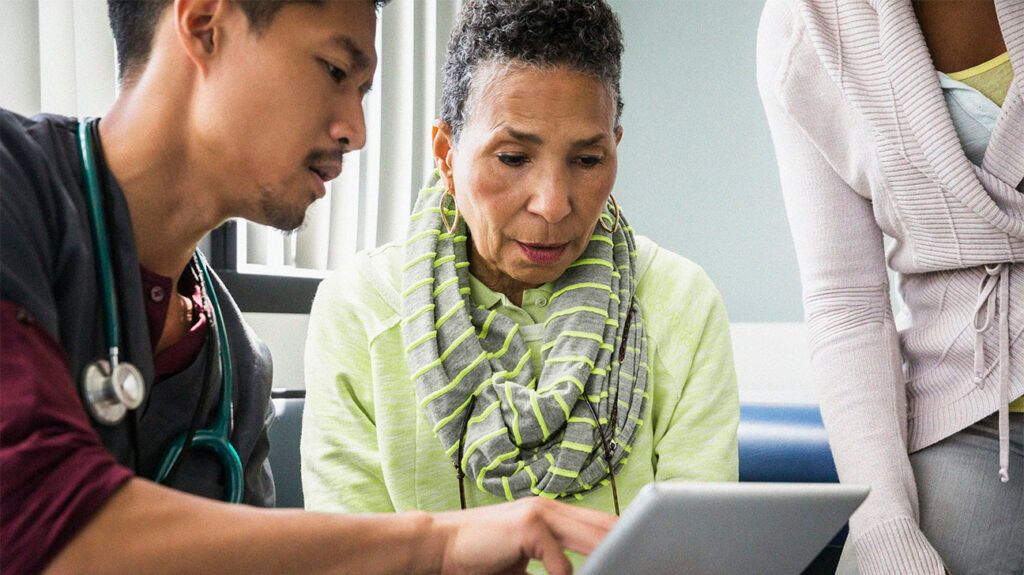A rigid esophagoscopy is a medical procedure that uses a tube-like instrument with a lens and light to view the inside of the food pipe, known as the esophagus.
Rigid esophagoscopy can detect tumors, foreign objects, and other conditions. Aside from diagnostic purposes, it plays a role in minor surgical interventions, such as widening a narrowed area.
Doctors consider the procedure safe, but it may cause complications, such as a hole or rip in the esophagus.
That said, procedures such as rigid endoscopy are no longer common techniques in use.
This article discusses rigid esophagoscopy, including why doctors carry it out, its complications, and what to expect before, during, and afterward. It also examines the difference between rigid and flexible esophagoscopy.

Doctors use rigid esophagoscopy to detect the following:
- tumors
- lesions
- areas of narrowing and other causes of swallowing difficulties
- foreign objects
It can also help doctors perform minor surgical procedures, including:
- a biopsy, which is the removal of tissue from lesions or tumors to examine under a microscope
- widening narrowed areas, which is known as dilation
- removing foreign objects
According to a
A
The above
However, the authors note that earlier studies indicate that complications may occur, the most common of which is a piercing or putting a hole in the esophagus. This is called esophageal perforation.
Other potential complications include:
- esophageal tear or rip
- mediastinitis, which is an infection or inflammation in the part of the chest containing the heart
- internal carotid artery dissection, which is the cutting of an artery in the neck that supplies the front of the brain
Despite the risk of complications, doctors consider rigid esophagoscopy safe in experienced hands.
Before the procedure, a person can make the following preparations:
- At the doctor’s appointment before the esophagoscopy, they need to answer all questions about medical history and medications, including over-the-counter drugs and dietary supplements.
- They need to follow the doctor’s instructions regarding how long to refrain from eating and drinking before the procedure.
- They also need to follow the doctor’s instructions regarding what medications and supplements to avoid taking before the procedure and for how long.
The procedure takes place in the hospital and usually takes no longer than 1 hour.
The day of the procedure will involve the following steps:
- Talking with a nurse: The nurse completes any necessary tests and provides a consent form to sign.
- Changing from street clothes to a hospital gown: It is best to leave dentures, jewelry, and other valuables at home. A care team member will provide a blanket for warmth.
- Talking with the anesthetist: This entails answering questions about medical history and the type of anesthesia the team will use.
- Starting of IV fluid: The care team administers IV medications, which enter through a vein, and inhaled gases. This is how healthcare professionals give anesthesia, which prevents individuals from feeling anything during the procedure.
- Monitoring of body functions: The care team monitors body functions during the procedure and afterward until the person regains consciousness.
Depending on the purpose of the procedure, doctors insert the endoscope or esophagoscope down the esophagus to examine the area, obtain samples, or perform the surgery. It usually takes around 1 hour.
A person will stay in the recovery room until their breathing rate, blood pressure, and heartbeat are stable. Some people may go home the same day, but an overnight stay may be necessary for others.
The effects of anesthesia may linger 24 to 48 hours, so individuals should not attempt to drive home. It is best to ask a doctor when to resume daily activities.
After hospital discharge, the person needs to attend all follow-up appointments. They also need to let a doctor know if they experience any troubling symptoms.
In flexible esophagoscopy, the tube is bendable rather than firm and rigid. Elastic fibers shine light in the esophagus, connecting to a monitor showing images.
A
Despite the above finding,
A rigid esophagoscopy involves inserting a tube with a lens and light down the esophagus to help diagnose various conditions. It can also help doctors perform surgical interventions, such as removing a foreign object.
The procedure is generally safe but carries some risk of complications, such as esophageal perforation.
Doctors perform the procedure in the hospital. Some people may be able to go home the same day, but others may need an overnight stay.
A person needs to follow all doctor’s instructions regarding preparations. This includes what medications and supplements to avoid taking and how long to abstain from food and beverages before the procedure.
